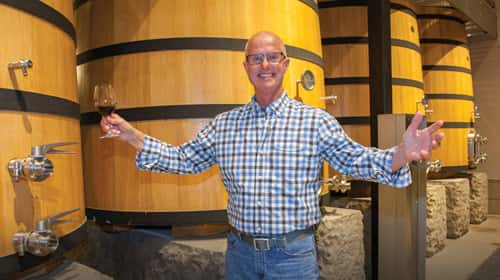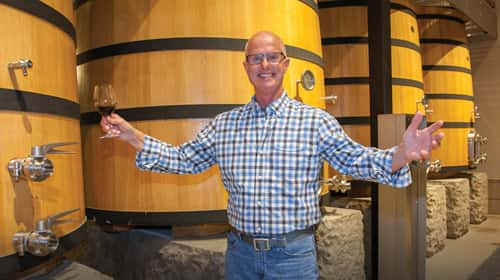 You can call him “Dream Weaver.”
You can call him “Dream Weaver.”
For 18 years now, Cary Gott, founder and owner of St. Helena-based Vineyard & Winery Estates, has been helping wannabe winery owners, “Cross the highways of fantasy…to the bright side of the moon,” as the song goes in Gary Wright’s 1975 hit song “Dream Weaver.”
Whether in Napa, Sonoma or even Arizona, Gott has been a guiding force behind some of the country’s top new wine brands of the past two decades. He’s a wine guru, you might say, who pulls strings even better than the Wizard of Oz to make things happen in an industry that’s been in his family’s blood for five generations.
“I’m a classic consultant—a wine industry start-up expert,” he humbly explains. “But I guess I’m also a dream weaver for people who want be in the wine business. Hold my hand and I’ll pull you in!”
Round Pond, Ram’s Gate, Lawer Family Estate—and most recently Davis Estates (where he is currently winemaker) all have the Gott fingerprint on their successful operations. (See “Frog’s Leap” on page 25.) When it comes to making wine, establishing a brand and direction, building a winery, hiring a staff and getting stuff done, Gott’s the guy. A literal “Jack of all trades,” Gott immerses himself in the nitty gritty details that most despise and he readily embraces. As a result, he has a unique capability to deliver on multiple levels and serve as the “glue” that keeps everything together.
Good Gott!
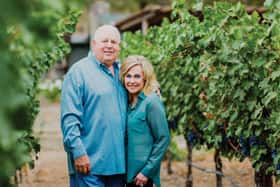 Chances are, if you ask anyone in the wine industry what they know about Cary Gott, the words “good guy” will be uttered in the first few sentences.
Chances are, if you ask anyone in the wine industry what they know about Cary Gott, the words “good guy” will be uttered in the first few sentences.
“He knows his stuff, is a good winemaker, a good person and he’s honest. Plus, he has the credentials when it comes to working with wine,” says John Bergman, owner of Bergman Euro National in Forestville, a real estate firm that specializes in winery transactions. “I’ve been in the business for years and you get to know the good guys and the bad guys. Cary’s a good guy.” Bergman has worked with Gott on several projects and points to his diversity. “He can work with teeny ones and big ones (wineries) and has lots of contacts. If anyone knows who to call to get things done, it’s Cary. And he does it with class.”
Several years ago, Bob MacDonnell, along with his son, Miles, and daughter, Ryan, decided to start making their own wine. The family had been growing grapes for other vintners at their Round Pond Vineyards in St. Helena since the early ’80s, but wanted to take the plunge and develop their own wine portfolio.
“We had a friend who had worked with Cary,” says Miles MacDonnell. “So we sat down with him, talked about our ideas, and pretty soon we were up and running. The thing that’s great about Cary is he knows the entire process, every step that needs to happen and the people who get it done. And because Cary is a fourth generation wine guy, he puts you at ease and gives you confidence in the decisions you are making.”
At Round Pond, Gott ended up being the winemaker for the first several years. “That wasn’t the intention, but that’s just how it worked out,” says MacDonnell. He also hired the staff, helped with work orders and assisted with label design. Initially, Round Pond planned on a maximum production of 3,000 cases. It’s been successful; today [we’re] making 35,000 cases per year.
“On the work side, he’s a guy who loves what he does, loves the people involved, is passionate about wine, and he just makes it fun. He’s totally pleasant to work with and has a great attitude, even when things get challenging. He’s a great guy—and a great guy to have on your side.”
Davis Estate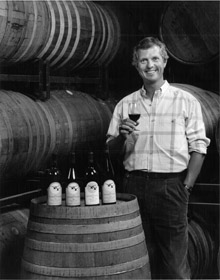
When Mike Davis and his wife, Sandra, purchased the old Cyril Saviez Vineyards property on Silverado Trail in Calistoga in 2011, one of the first people who contacted Davis was Gott. Together they forged a “great team,” says Davis. “He has energy and he’s got the knowledge. He’s probably forgotten more than what I have learned in the wine industry.”
Mike Davis grew up in San Mateo and, as a boy, spent summers camping with his family near Lake Berryessa. He put himself through college at the University of Indiana on a discus-throwing scholarship. A city boy, he found himself enamored with barns, tractors, windmills and all the traditional Midwestern rural landscape accoutrements rarely found in urban California.
When he turned 21, he revisited the Napa Valley with Sandra (then his girlfriend). They were at Sterling Vineyard, enjoying wine and the Napa Valley ambiance, when they both agreed that “sometime in our life, we would like to get up here to do this,” he reflects. “But then, life, business, children and everything else gets in the way.”
The couple built a successful computer business, Applied Computer Solution, in Huntington Beach. In 2010, they sold their majority interest and had some cash to invest, right when the economy made Napa Valley property more attractive. They were able to buy two contiguous parcels that were distressed—one had been in bankruptcy for several years—and in May of 2011 found themselves ready to jump into the wine business.
Davis secured architect Howard Backen of Backen, Gillam & Kroeger Architects, to restore an old barn on the property and build a winery and hospitality center. “[He’s] the Frank Lloyd Wright of the Napa Valley,” says Davis. He brought in Gott as a consultant to get the operation up and running.
Davis explains that he had an idea “how to put this together, but I didn’t have that central figure to pull it all together because, candidly, I was still heavily involved in the computer company and just didn’t have the time. He [Gott] truly was the glue that held all the pieces together.”
In addition to working with Davis’ self-confessed obsessive-compulsive disorder for everything symmetrical, Gott coordinated the permitting process, planned the winery with the architects and engineers, helped hire staff and even today remains the head winemaker for the Davis Estates Umbrella portfolio. (Philippe Melka is the winemaker for Davis’ premium “Phase V” Cabernet program).
Gott’s work on Davis Estates has created one of Napa Valley’s newest icons, a winery that salutes its historical roots while fully embracing technological advancements. It is a “new age-throwback” winery at its finest.
Early days
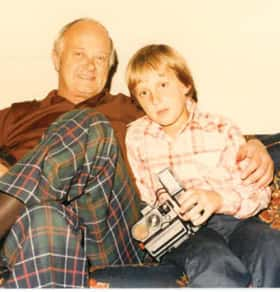 While he grew up in the wine industry (his father, James Gott, ran Inglenook), Gott’s first love was architecture, which eventually proved fortuitous for his consulting business, since much of what he does relates to winery design and construction.
While he grew up in the wine industry (his father, James Gott, ran Inglenook), Gott’s first love was architecture, which eventually proved fortuitous for his consulting business, since much of what he does relates to winery design and construction.
“I had a choice of going to Rice University or USC [University of Southern California] to study architecture. Los Angeles was a great place to be a kid and I studied architecture for a couple of years until the first Watts riot drove me out of town and sent me to U.C. Davis,” Gott recalls. (The Watts riots—which lasted six days in August of 1965—were part of the fabric of the Civil Rights Movement. Thirty-four people were killed.)
At Davis, Gott took, introduction to wine for Americans, which was taught by the late Maynard Amerine.
“Amerine was part of a group after World War II that reestablished the California wine business,” which had been in a relative hiatus since the end of Prohibition, Gott explains. “I took the course and fell in love with it, and within a year I had a part-time job with Inglenook.”
His next job took him to the then-new Sterling Vineyards, where he became the second man hired to work in the cellar.
Gott met his wife, Vickie, on a blind date when he was a freshman in high school at Menlo School for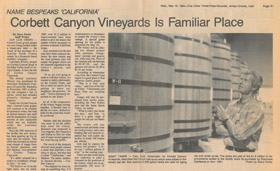 Boys and she was an eighth grader at a nearby middle school. They married in 1968, and Gott took to heart some investment advice his banker father-in-law gleaned from a report that very year, which said there were great opportunities in the growing California wine industry. As newlyweds, he and Vickie looked around Napa Valley, but ended up buying a 500-acre property in the Sierra Foothills in Shenendoah Valley. In 1973, they started Montevina Winery in the basement of their home. Within two years, they built a permanent winery facility‑the first modern winery in Amador County. “Now the countryside there is littered with them,” Gott says.
Boys and she was an eighth grader at a nearby middle school. They married in 1968, and Gott took to heart some investment advice his banker father-in-law gleaned from a report that very year, which said there were great opportunities in the growing California wine industry. As newlyweds, he and Vickie looked around Napa Valley, but ended up buying a 500-acre property in the Sierra Foothills in Shenendoah Valley. In 1973, they started Montevina Winery in the basement of their home. Within two years, they built a permanent winery facility‑the first modern winery in Amador County. “Now the countryside there is littered with them,” Gott says.
He became one of the kings of California Zinfandel, featured prominently in “Angels’ Visits,” a 1991 book about Zinfandel by David Darlington, and eventually sold the winery to Sutter Home.
After Montevina, Gott worked his magic at Corbett Canyon, one of the biggest challenges of his career. “The previous brand had been ruined, and I had to tell the company that owned it that we needed to throw it all out, get rid of all the wine and redo the packaging. Then it became a very big success.”
He then spent more than 12 years working for Seagram’s Classics Wine Company, enduring all the revolving doors in sales and marketing that are part and parcel of the corporate environment.
“We first lived in Carmel, and I ran Monterey Vineyards. Then we moved back to the valley (Napa Valley) in the early ’90s and built our home while I ran production for Sterling Vineyards and Mumm Napa Valley.”
Gott severed his ties with Seagram in the late ’90s and jumped head-first into the consulting business, founding Vineyard and Winery Estates in 1999. He took to the start-up challenges of his clients like a duck takes to water. For a year, he admits he “stumbled around stacking papers and used a little stick thing on my desk with pink ‘While You Were Out’ message slips. What I never understood is why I didn’t ever put the thing through the palm of my hand.”
And then, along came Mary. For the past 16 years, Mary Peterson has been a calming influence on the daily flow of projects and has taken most of the packaging projects under her wing. When asked how it is to work with Gott, it was a single sentence answer.
“He’s hard to keep up with,” she says.
Gott just wants to have fun!
To Gott, the juggling act he performs for his clients is just pure fun.
“Some want to build wineries, some want answers about getting into the business, some want information on their vineyards, some need help making wine. We work with designers, engineers and architects,” he says, not to mention planning commissions and all the other permitting agencies.
To get an idea how Gott works, he laughingly refers to using “the quiver of arrows I have on my back,” he says. “It’s great fun because I get to work with the same cadre of people from the past, plus someone new each time. There’s the legal aspects, land location, use permitting, staffing and finding a way to make wine before the shovels even hit the ground, because one of the things you want to do if you’re getting into this business is build a new winery, but when you open your door, you need to have wine.” To accomplish this, Gott hooks his clients up with custom crush facilities.
He prefers to “slowly walk into the pieces,” he explains. “Generally, there are lots of items on the table and lots of people around the table, and you try to narrow the focus to what they realistically can do, and then start the project.”
“There are always changes along the way. You may knock out different walls or pick different varietals to make. But it’s fun to put together the operations for people.”
He tells the story about Aridus Wine Company, a client in Willcox, Ariz. “The Willcox Bench in southeastern Arizona is a great grape-growing region. My client wanted to build a fancy new winery, but didn’t want to wait that long to get into the business. So I got them into a different part of the business. I told them, ‘Let’s find a building in town and see if we can turn it into a custom crush facility.’”
It only took one day.
“We located a building that looked just like the first building I designed and built in Amador County—it was a metal rectangle apple storage building that we converted into a state-of-the-art custom crush winery. We bought grapes from nearby vineyards and had wine within a year-and-a-half,” Gott says. Today, Aridus is Arizona’s largest custom crush facility.
Originally, the client visualized a winery with beautiful vineyards and a lovely home. “They are still fulfilling their dream,” Got says. “It’s just a little different.”
Being Gott
While he is definitely a Type-A personality and loves to work, downtime is also important. Trim and in excellent physical condition, Gott lifts weights, swims, runs and bikes for exercise, and in his spare time he takes care of his own vineyard and enjoys time at the family home in Lake Tahoe, which has been a part of his life since he was a child.
“I grew up on water at Lake Tahoe,” he reminisces. “In front of our house, there’s a walkway that goes out to the pier. It’s covered in my little one-year-old footprints in the concrete.”
In addition to his wine consulting business, the Gott Family—including sons Joel and Duncan—also owns Gott’s Roadside restaurants, gourmet burger bars located in St. Helena (formerly Taylor’s Refresher), at the Ferry Building in San Francisco, in Town & Country Shopping Center in Palo Alto and in Oxbow Market in Napa. It’s a growing business, with more locations opening soon, Gott says.
Gott and his wife have five grandchildren to entertain them. And for the last 18 years, Gott has had a second job as Santa Claus.
He has a great Santa suit augmented with pillows to add the necessary weight‑plus a beard, hair and hat to conceal his clean-shaven face and head. And while his grandkids are all now old enough to know he was the Santa of their young years, Gott still has clientele.
“I’ve got young kids,” explains MacDonnell. “[And Gott] has this great Santa Claus tradition. He comes by on Christmas morning and goes house to house. He shows up in this awesome suit and we put the presents on the driveway. He picks them up on the way in and just gives the kids a real thrill.”
Cary Gott: Santa to kids, and dream weaver for adults.
Frog’s Leap
Cary Gott has seen a lot during his nearly 50 years in the wine business, so when NorthBay biz asked him to name a wine brand that has done it nearly perfectly since the beginning, there was a pause. And then an answer: “Frog’s Leap.”
“Their success is due to great relationships with customers, grape growers and the environment of Napa Valley and Napa County,” Gott says. “It’s a consistent brand. There hasn’t been a new marketing director walking in every four years, changing the label and throwing everything out. They’ve been very focused on what they do.”
Founded by John Williams and Larry Turley in 1981, the Rutherford winery has long enjoyed a reputation for excellent wine and successful branding. We talked with Jonah Beer, general manager at Frog’s Leap, who was “very flattered” that Gott cited the winery.
We asked him about the keys to the success.
“You have to ask yourself the tough questions and we never stop asking ourselves the same questions we asked ourselves at the very beginning,” Beer says. “This is a crowded and fragmented market with many competing stories and you have to have a strategy to stand out.”
Beer said Williams—now the sole owner of Frog’s Leap—once told him: “Jonah, if you want to be in the news, you have to make news.”
To Beer, that means your personal story drives your brand vision. “Daily, monthly, yearly, you have to ask the question: Are we true to our core belief and are we telling the story that makes us unique? At Frog’s Leap, we’ve never wavered,” says Beer. “The same fine wine vision that drove us in the beginning still drives us today. We’re flattered at what Cary said, but we’ve not done everything perfect. Tell Cary we once made 500 ml bottles of Merlot. That was a mistake you could write a book about! But even our mistakes were because of our pursuit [to find out who] we were.”
Beer says Napa Valley, in particular, has a special position on the global stage of fine wine.
“Fine wine is driven by an ambition the recognizes that elegance, restraint and respect for terroir are universal concepts. At Frog’s Leap we pursue our wine via a path of farming first and winemaking second,” he explains. “Everybody thinks, ‘Oh, Frog’s Leap—they started farming organically and that’s what made them cool.’ Or we hugged trees. Well we did those things because we felt it would enhance the elegance and terroir-based flavors in our wine.”
One such decision was dry farming. Frog’s Leap has never irrigated its vines.
“We don’t dry farm to save water, though we love the fact it saves water. We did it because it enhances the flavors at a lower sugar level, which leads to less alcohol and a finer wine,” Beer says.
Frog’s Leap had to navigate “tricky waters to find a unique path to farming and winemaking that enhanced the core beliefs that we believe run through the entire Napa Valley—from Calistoga to Mt. Veeder,” Beer says. “It’s our belief that this valley takes a rightful and prideful position on the world stage of fine wine. But it takes dedicated vintners to pursue that path. It might not always be the easiest and it might not always be the most expeditious, but if you have patience and the willingness to stick with it because you believe that what you’re doing is correct, you don’t waver. And that might be what Cary is referring to. It’s not that we were smart enough to stick with marketing plan because we didn’t have one.
Sometimes I feel like we’re not as hip to the world of research, brand and market strategy. It’s funny, the more we separate ourselves from trying to prove we’re unique, the more we can focus on being unique. And that seems to make us better off in the end.
“We didn’t set out to be marketing wizards, and I don’t think we are. The fact that someone with his bone fides, and his success and track record would look to us, and what we’ve done over the last 36 years, is something to be appreciated. It makes us sit back and say, ‘Okay, why is he saying that?’ Beer pauses to laugh, then says, “Now the pressure is on!”
Davis Estates
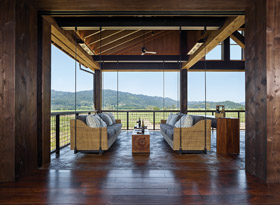 Cary Gott’s client list runs the gamut, from small mom-and-pop operations to large-scale enterprises. Some are rustic, some are simply utilitarian, some are lavish. And then there is Davis Estates, his largest current undertaking.
Owner Mike Davis had a vision.
Cary Gott’s client list runs the gamut, from small mom-and-pop operations to large-scale enterprises. Some are rustic, some are simply utilitarian, some are lavish. And then there is Davis Estates, his largest current undertaking.
Owner Mike Davis had a vision.
“I wanted to keep the country look, I wanted understated elegance and I wanted a soft footprint on the environment,” Davis explains. “I wanted the place to look like it had been here for a while, even though it’s new.”
The barn, built in 1916 and on the California historic register, was carefully cut, picked up and moved 150 feet north. A new foundation was poured with a steel skeleton where the old barn was, then three walls were craned and reattached to a new indoor skeleton made of steel to make it earthquake-proof. Restoration took two years. In the barn are some of Davis’ “toys” (he has many collections of art, autos and implements) such as a 1949 Ford tractor and a 1939 John Deere tractor, plus an old Polly Gas pump, a fireplace in a custom-crafted boiler, Big Ass (that’s the brand name) fans, Big Ass lights, a 1909 player piano restored (with a digital player unit inside) and a table crafted from 33 wine barrels. The barrel staves are set on end to achieve a serpentine look on the table top.
“My grandfather was from Poland and was a cabinet maker and furniture maker. He taught me the love of form and function of wood. That’s why you see so much wood here,” Davis explains.
The barn served as a tasting room from August 2014 until the permanent hospitality center was completed last May.
The new hospitality center’s architecture is reminiscent of the barn, with intersecting roof lines, beautiful wood, high ceilings, refined furnishings and a view west to the Mayacama Mountains.
Understated elegance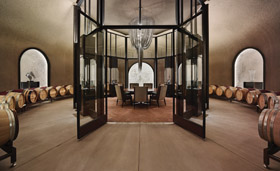
While the barn is rustic, the hospitality center, winery, cellar and caves are elegant and modern. “I’ve never done a winery as elegant as Davis Estates,” says Gott. “I’ve done beautiful visitor centers, but I’ve never done a backroom production facility as pretty as Davis Estates. All the electronic controls are hidden. All you see are the tanks.”
A glass walkway separates two tank rooms with stainless steel tanks on one side and concrete tanks on the other. In Davis’ own words, “It’s a little cleaner than a hospital.” And it’s here that Davis’ tech background comes to the fore.
“I wanted to use tech to cut out what is, in a sense, slave labor. When we go into harvest, it’s nothing but work, seven days a week, 24-hours a day. So I asked myself, ‘How can we use enhanced technology to improve the lives of the staff that makes the wine?’’’
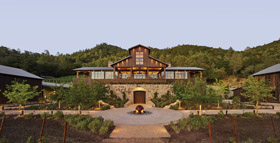 Working with Refrigerated Technology Incorporated (RTI), Davis Estates became a guinea pig of sorts, partnering to produce software to run the entire production operation from iPads. A pump is positioned under each tank and there’s an internal temperature control as well. All pump-overs, sparging, temperature control and monitoring is done via tablet devices.
Working with Refrigerated Technology Incorporated (RTI), Davis Estates became a guinea pig of sorts, partnering to produce software to run the entire production operation from iPads. A pump is positioned under each tank and there’s an internal temperature control as well. All pump-overs, sparging, temperature control and monitoring is done via tablet devices.
“So instead of coming in at 10 p.m. and doing pump-overs for seven hours, [production staff] can pull out the iPad. Each tank has its own pump and they just push the buttons. They can stay home, get alarms, watch tank temperatures, oxygen content, flow and everything. It’s been a great tool,” Davis says. “It’s probably saved us 100 to 150 hours of week of labor (during harvest). Instead of running our staff ragged 24-7, we ran it with four people.”
But the coolest of “cool stuff” is saved for the cave, where guests are greeted by a gleaming crystal chandelier and glass table. The path forward leads to the barrel walkway. Art that the Davis’ have given each other on their wedding anniversaries is on display among the barrels. Finally, one reaches massive, double steel doors, with access available only to members of Davis Estates’ Phase V Cellarium Cave room.
A pad to the right of the steel door entrance biometrically scans the veins in the member’s hand, the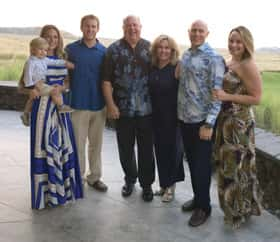 doors open slowly, grand music of Andrea Bocelli rises up, along with the lights within a Hudson Steel chain chandelier and inside is a separate glass octagon room, “a jewel box,” says Gott, where guests can enjoy wine in comfort of 72 degrees (versus the 58 degrees of the cave).
doors open slowly, grand music of Andrea Bocelli rises up, along with the lights within a Hudson Steel chain chandelier and inside is a separate glass octagon room, “a jewel box,” says Gott, where guests can enjoy wine in comfort of 72 degrees (versus the 58 degrees of the cave).
Davis bought a Monkey Pod tree to secure wood for the room’s table‑assembled in a V pattern. The V’s in the table line up with the octagon’s portals, which line up with the art portals outside the glass structure. As for the floor? Bricks laid out in a V pattern were brought in from Europe. You have to see it to believe it.
“The size and mass is hard to envision unless you have actually been here,” Davis says.
Understandably, Davis Estates is one of Gott’s crowning projects.
“At Davis,” Gott proudly says, “everything is to the nth degree.”


